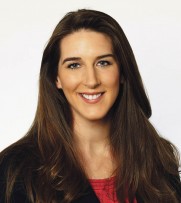Thirty years ago if you were looking for shoes you’d go to a shop to check out what was available, and probably buy them there and then. Five or ten years ago you’d very possibly choose a pair and then make the purchase on your desktop computer.
Today consumers are increasingly likely to see something on one screen, probably a TV, browse items on another device, typically their smartphone or even wearable technology, research it further on yet another device, which could be a tablet, before buying it, perhaps on a fourth machine, very likely a desktop.
According to Forrester Research, more than half of US consumers now carry out a single activity across multiple screens and one in five say they always do it. It’s a development that makes life easier for consumers, but evermore difficult for brands trying to follow these device nomads as they move from one screen to another in the purchase process.
“We want to put consumers front and centre, regardless of the device that they are using,” says Kate O’Loughlin, senior vice president of media business at Tapad Inc, a marketing technology firm whose breakthrough, unified, cross-device solutions are attracting a growing number of brands that want to reach their consumers across the increasing number of screens they’re now using.
“The challenge for brands is to identify people beyond the traditional use of cookies, which we now see as something of a blunt tool,” Ms O’Loughlin says. She points to a survey by Econsultancy last September which revealed the “inability to recognise customers across devices” is regarded as a leading challenge to 32 per cent of brands in the United States looking to grow their digital display advertising programmes.
Tapad has developed a sophisticated and very accurate way of understanding consumer behaviour by what it calls “stitching together” a cookie on one browser to the person who was using it, so when they arrive on a different browser the system recognises them.
“It’s like reading something on your tablet and then moving to your smartphone, picking up exactly where you left off – no starting again or searching for your place,” Ms O’Loughlin says. “For brands this means that if a consumer looks at an item on their phone and then visits the same site on the computer, the system will remember what they looked at and which ad drew them in, even if they didn’t transact. This increases the likelihood of them moving towards a purchase.”
Knowing who is looking at your ads makes more economic sense, as Tapad clients are discovering. Instead of paying for large numbers of ads, many of which are seen by the same consumer across multiple screens, often to the point of irritation, thanks to the extra layer of identity-checking or the stitching together of consumer details, brands can be reassured they’re getting maximum views of their ads by potential purchasers, whichever device they’re using.
Whether you’re a brand, an agency or a publisher, you can see the number of real people that you’ve reached across multiple screens
According to Ms O’Loughlin, too many brands are siloing their budgets and are not deploying them across all devices. “They know that it’s better to use the various channels in tandem, but that’s not easy because you need the correct measurements and execution in place,” she says. “They need to make the whole strategy user-centric. Brands enjoyed great success when consumers just had one screen on which to browse and buy, but now they need a system that works across every part of the consumer’s life – all the physical and the emotional situations that they find themselves in – and then looks at them all together.”
As well as being able to use large amounts of data to identify a consumer across multiple screens accurately, Tapad finds clients appreciate the fact that it’s not a “walled garden”. Unlike companies such as Facebook and Google, which provide data on consumers, but only allow brands to use that data on their own platforms, Tapad is independent. Siloing consumer data by platform is as unhelpful as siloing it by device, the company says.
“It’s not just the quality and scale of the data, but it’s what we’re doing with it,” explains Ms O’Loughlin. “We provide insightful data that people can actually use to make decisions.” The Tapad Device GraphTM is key here. “Whether you’re a brand, an agency or a publisher, you can see the number of real people that you’ve reached across multiple screens. You get a much more unified view of what’s going on.”
Tapad believes that whatever the device people use, creating engaging video content is essential. The company is currently involved in some exciting research into the impact of video versus banner ads. “We’re comparing, across multiple screens, the number of ads for a brand that a person needs to see with the amount of exposure time they require in order to get to the point of conversion,” says Ms O’Loughlin. “We want to know how exposure to a minute of video, which has sight, sound and motion, compares to a minute’s exposure to a banner. Our theory is that it’s not about the number of ads that the person sees; it’s the quality of minutes.”
The results will provide marketers with deep insights into effective consumer engagement. Matched with the capability offered by Tapad to reach those consumers from device to device, it’s a powerful tool that will be welcomed by forward-thinking brands.
For more information please visit www.tapad.com or e-mail us at findme@tapad.com

